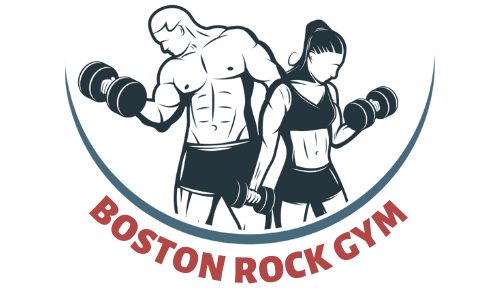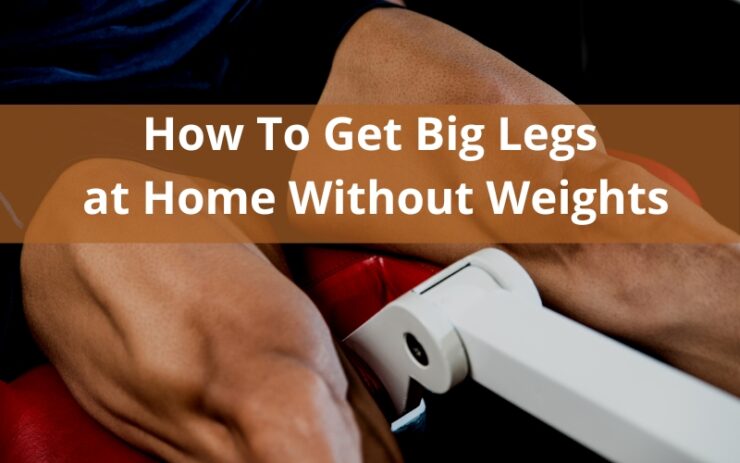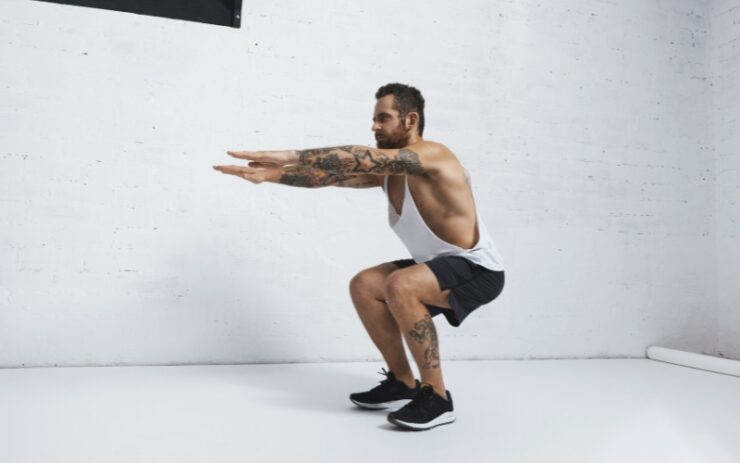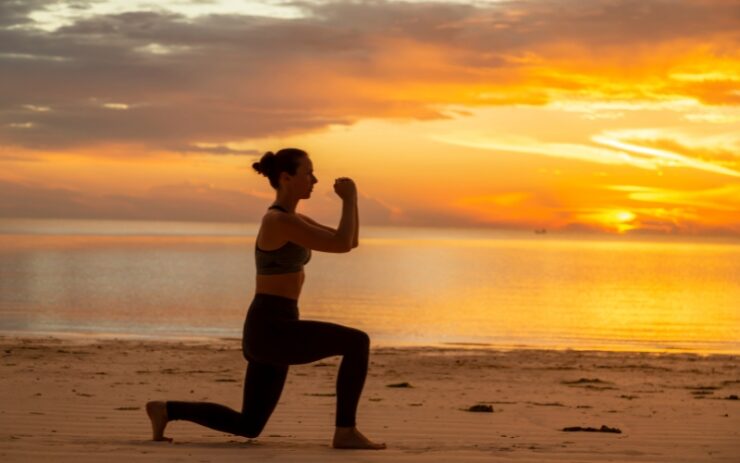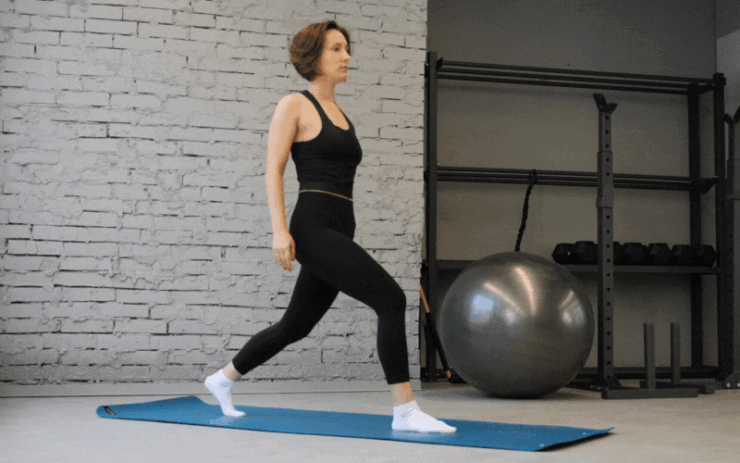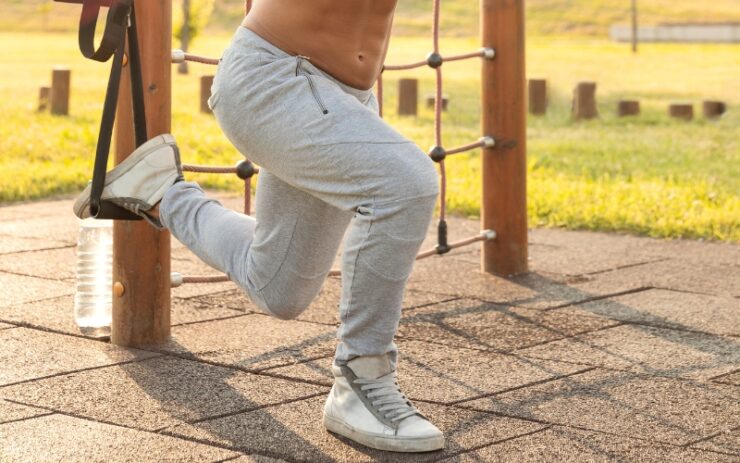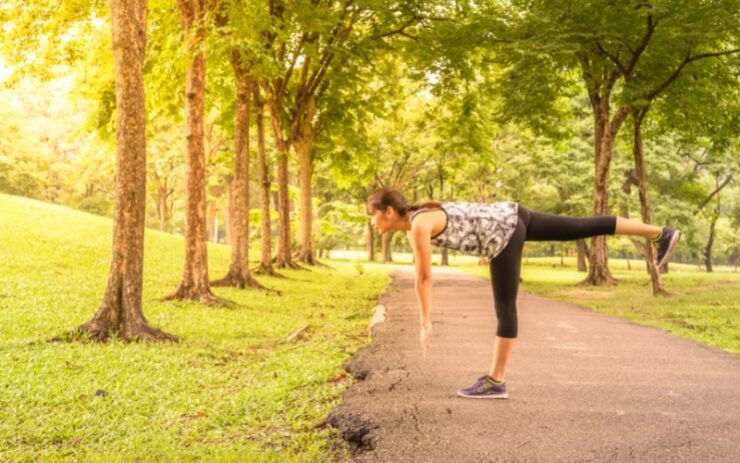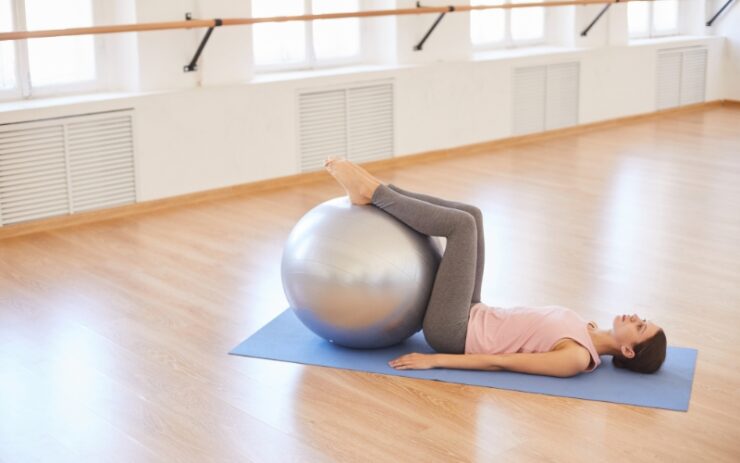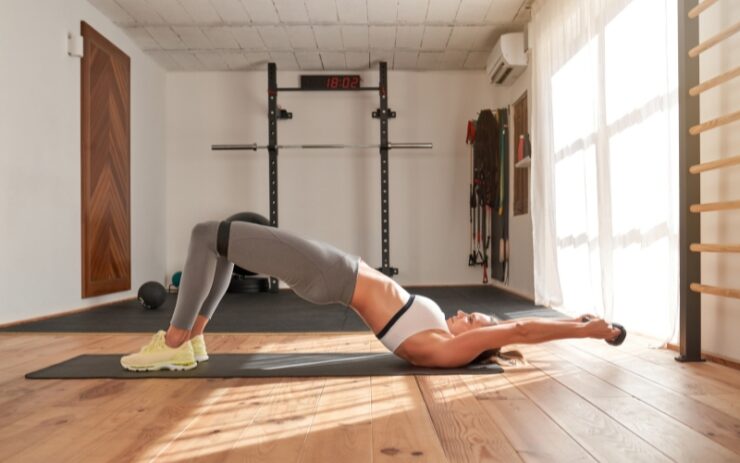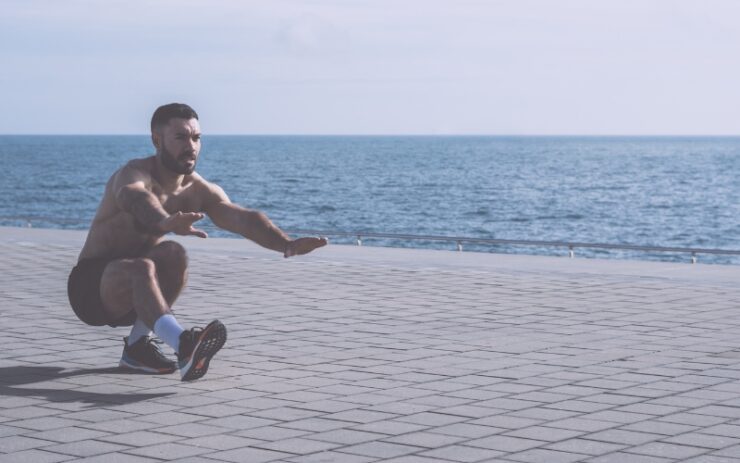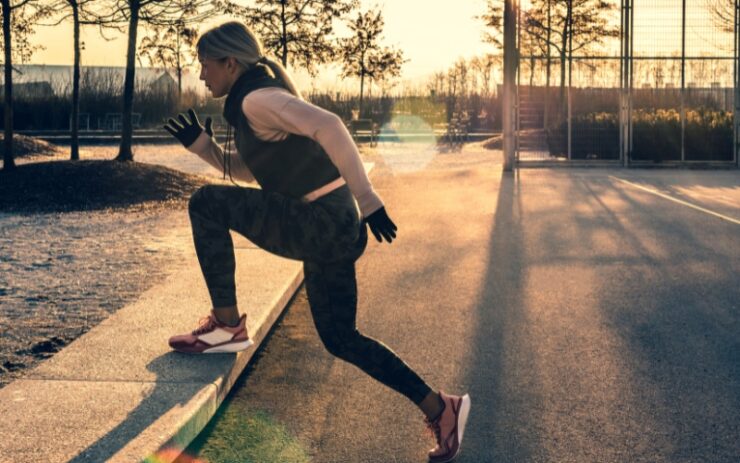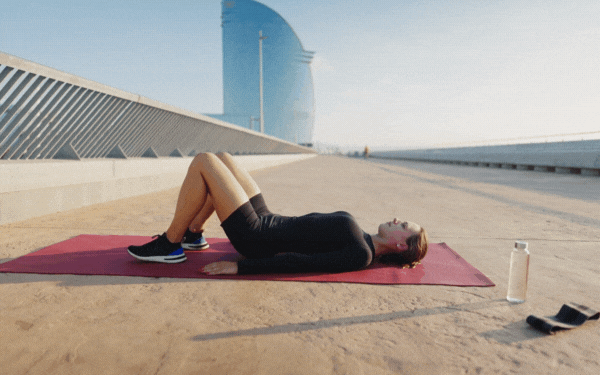Looking for ways to get big legs at home without weights? We got you! To save you from wasting time trying to find appropriate workouts, we provide you with a list of the top 10 exercises you can do in the comfort of your own home! Let’s begin right away.
Contents
Top 10 Exercises for Getting Big Legs at Home Without Weights
1. Heels Elevated Bodyweight Squat
One of the most common exercises to build legs is the squat. Elevating the heels will target your quadriceps more effectively than having your feet level, allowing you to attain depth even if you have any mobility issues with your ankles. This is how you do it:
- Standing with your feet slightly wider than shoulder width and toes pointed outward, raise your heels one inch off the ground
- Squat down by bending at the knees and hips (hips should go slightly backward) (knees should move slightly forward and out to the side)
- Get your thighs close to your calves
- To get back to the top, push through with your entire foot
2. Front And Rear Foot Elevated Split Squat
This is a split squat with added strength. Greater muscle development is correlated with a complete range of motion. We may put the muscle fibers under even more stretch and increase the muscle-building response by pushing that range of motion to its limit.
You must raise both feet to do this. You’ll thus need two boxes or a platform to stand on. It doesn’t have to be very high. This is how you complete the exercise:
- Put both of your feet up on your box or plates and stride your feet in a lunge posture
- Straighten your hips as you descend. The front of your shin should be nearly vertical
- Once your back knee contacts the floor or you feel a powerful stretch, stop. To go back to the beginning position, push through with both feet
3. Lunge
The lunge is the most adjustable leg exercise you can perform at home. Lunges can be done in the forward, lateral, reverse, or walking positions. To target particular muscles, you may even adjust your body position and stride length.
For instance, bending forward will emphasize your glutes more, whilst standing more erect would emphasize your quadriceps. Shorter steps will work your quads, while longer steps will work your glutes.
Additionally, reverse lunges will focus more on your glutes than forward lunges. Thus, you may choose the appropriate lunge variety according to your objectives. Here are some tips for lunging effectively:
- Put your feet shoulder-width apart to begin
- To do the forward, lateral, or reverse lunge, take a step forward, backward, or sideways
- From the moment your foot strikes the ground until your hips are straight down, there needs to be one seamless motion
- Return to the starting position by pushing. Push with the front leg and move the back leg forward when completing walking lunges
4. Bulgarian Split Squat
Another excellent single-leg squat variant is the Bulgarian split squat, also known as the rear foot raised split squat. In comparison to a regular split squat, this variation requires more effort from your front leg because your rear leg is lifted. Here’s what you should do to perform this one:
- Place yourself a few steps in front of your sofa. One leg should be on the sofa
- You should make sure you’re on your toes with your foot flat rather than raised
- Until your thigh is parallel to the floor, lower your hips straight down
- To go back to the starting position, push with the front leg
5. Single-Leg Romanian Deadlift
By extending the hips, you can specifically work your hamstrings. Without any weights, the Romanian deadlift is not that difficult. But if you perform the exercise on one leg, it gets tougher. Here’s how to do this exercise successfully:
- Your knee should be slightly bent when you bend your stance leg
- Consider using your hips as a pivot see-saw’s point
- Maintain a straight line from your head to the heel of your free leg as you rotate around your hips
- Get almost horizontal by lowering yourself. A significant hamstring stretch ought to be felt
- To return to the starting position, reverse the motion
6. Swiss Ball Leg Curl
Without weights, hamstring training is the most difficult. There are several squat variants that will work your glutes and quads. Sadly, they don’t do anything to strengthen your hamstrings. If you don’t have a Swiss ball, you can get one for as low as 10 bucks.
The hamstrings cross both the hip and the knee because they are biarticular. Therefore, activities that include both knee flexion and hip extension should be employed to develop the hamstrings.
Exercises for hip extension are simpler to carry out without weights or other tools. Without some tools, knee flexion exercises are all but impossible. The Swiss ball enters the scene at this point. Here’s how to perform this activity:
- Place your heels and calves on the Swiss ball while lying flat on your back with your legs straight
- To create a straight line from your feet to your shoulders, lift your hips
- As you remain in this posture, draw your heels toward your butt
- Reach the beginning posture by slowly extending your legs
7. Hip Thrust
The hip thrust is a workout that will focus mostly on your glutes. No other workout on this list will compare to the burn you will experience. While the exercises on this list may be performed without weights, you can also employ a weight partner. Have them simply sit on your hips. A hip thrust should be performed as follows:
- With your feet on the ground and your hips just off the floor, lean your shoulder blades up against the sofa
- You should rest your elbows on the couch for increased support
- Squeeze your glutes, lift your hips, and drive into your heels
- Keeping pressure on your heels, bring your hips back to their starting position
8. Pistol Squat
Only experienced individuals should do the pistol squat. Pistol squats, especially when done without weights, can aid in increasing your leg bulk if you already have a strong foundation. You may use your sofa as a seat and support if you have trouble getting into the bottom position.
It is best to do pistol squats on a raised surface, such as a box, an edge, or a set of high stairs. By doing this, you may let your free leg hang down instead of holding it in front, which can be quite unpleasant. Here’s how to perform a pistol squat:
- Standing on your raised surface, hang one leg over the side
- As you squat down, hold your arms out in front of you for stability
- Get your thighs close to your calves
- It will be challenging to maintain balance, and practice is essential.
9. Step Up
The weighted step-up workout is great for the lower body, and using dumbbells makes the muscles you’re working out work harder. It may be modified to create a secure and efficient workout for persons of all fitness levels and can be incorporated into almost any exercise program intended to increase upper leg and gluteal strength.
Place a step, box, or bench in front of you as you stand. Dumbbells should be held at shoulder height while you perform the following:
- As you rise, extend your right leg by pressing with your right foot’s heel
- On top of the step, bring your left foot to meet your right foot
- With your left foot, take a step back while bending your right knee
- Move the right foot to the same level as the left foot
10. Single-Leg Bridge
To focus on and develop the hip extensors, try the single-leg bridge exercise (glutes and hamstrings). This exercise is appropriate for lower body strength training carried out at the gym, at home, or even while on the road because it doesn’t call for any special equipment.
The starting position call for your hands hanging by your sides, your knees bent, and your feet flat on the ground while you lay on your back. Lift one foot, completely extending it until it is at a 45-degree angle with the floor, then proceed to do the following:
- Lift your hips until your shoulders and knees are in a straight line. This will call for support from your abdominal and buttock muscles. At the same moment, tighten your abdominal muscles
- Hold this posture for one or two counts
- To get back to the beginning posture, gently and carefully lower the hips to the floor while maintaining an extended leg
- To get the appropriate number of repetitions, repeat on the same leg
Conclusion
Getting big legs at home without weights might seem daunting and challenging, but it doesn’t have to be. Always remember that practice makes perfect, so stay consistent and don’t give up! Results will come if you stay determined and keep up the good work.
